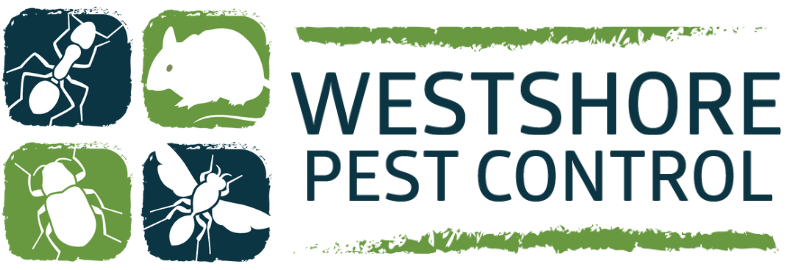How Common Pests Can Trigger Allergies and Asthma
Our homes are meant to be sanctuaries—a place of comfort, safety, and health. Yet, beneath the surface of our everyday routines, unseen intruders may be lurking, silently compromising the very spaces we cherish. Household pests, often dismissed as mere nuisances, can have far-reaching impacts that extend well beyond the inconvenience of their presence. These unwelcome guests frequently carry with them hidden dangers that threaten our health, particularly when it comes to allergies and asthma. Their presence can disrupt the delicate balance of a healthy home, leaving behind allergens and triggering respiratory issues that can affect everyone, from children to the elderly.
What makes this connection even more alarming is how easily it can go unnoticed. The particles left behind by pests—be it the droppings of cockroaches, the dander of rodents, or the microscopic debris from dust mites—often become airborne, contaminating the very air we breathe. For individuals with sensitivities, these allergens can lead to chronic discomfort, ranging from sneezing and congestion to severe asthma attacks. Even for those without pre-existing conditions, prolonged exposure to pest allergens can take a toll on overall health and well-being. Understanding this link and taking proactive steps to address it are essential in maintaining a safe and healthy home environment for ourselves and our families.
The Hidden Allergens Pests Leave Behind
Pests are more than a physical presence in your home; they leave behind a trail of allergens that can linger long after they’re gone. Cockroaches, for instance, are one of the most common culprits linked to allergic reactions. Proteins found in their saliva, droppings, and shed exoskeletons are potent allergens that can become airborne, contaminating the very air we breathe. These particles settle into carpets, upholstery, and even the smallest cracks, making them difficult to eliminate without proper intervention.
Rodents, another frequent household pest, contribute to indoor allergens through their urine and dander. Mice and rats often nest in hidden spaces like attics, walls, or basements, where their droppings accumulate and release harmful particulates into the air. Even after the pests themselves are removed, these allergens can persist, posing ongoing risks to those with sensitivities or respiratory conditions.
Dust mites, though not traditionally viewed as pests in the same way as cockroaches or rodents, are another significant source of indoor allergens. These microscopic creatures thrive in bedding, carpets, and upholstered furniture, feeding on dead skin cells. While invisible to the naked eye, their presence can exacerbate allergies and asthma, particularly in environments with high humidity or poor ventilation.
How Pests Worsen Respiratory Conditions
The link between pests and respiratory health goes beyond simple allergic reactions. For individuals with asthma, pest allergens can act as potent triggers, causing symptoms like wheezing, coughing, and difficulty breathing. Studies have shown that exposure to cockroach allergens in particular is a significant factor in asthma morbidity, especially in urban areas where infestations are more common.
Rodents also pose a unique threat to respiratory health. In addition to their allergens, mice and rats are carriers of diseases such as hantavirus, which can be contracted through inhalation of contaminated dust. This makes their presence in a home not just an annoyance but a serious health hazard, particularly for those with compromised immune systems or pre-existing respiratory conditions.
The effects of pest-related allergens can be particularly severe in children, who are more vulnerable to environmental triggers. Prolonged exposure during early development can lead to chronic respiratory issues, emphasizing the importance of proactive pest management in homes with young occupants.
Environmental Factors That Contribute To Pest Allergens
Several environmental factors within a home can exacerbate the presence of pest allergens. Humidity, for instance, is a key contributor to both pest infestations and allergen buildup. High humidity levels provide the perfect environment for cockroaches and dust mites to thrive, increasing the likelihood of allergen accumulation.
Cluttered or poorly maintained spaces can also create havens for pests. Rodents and cockroaches are adept at finding shelter in stacks of boxes, piles of clothing, or neglected corners, where they can nest undisturbed. These hidden infestations often go unnoticed until allergens have already had a chance to take hold, making routine cleaning and inspection essential for prevention.
Additionally, poorly sealed entry points in a home—such as gaps around windows, doors, or plumbing—allow pests to infiltrate and establish themselves. Once inside, they can multiply quickly, spreading allergens throughout the house. Addressing these vulnerabilities is critical to reducing pest-related health risks.
Steps To Minimize Pest Allergens In Your Home
Maintaining a pest-free home requires a combination of vigilance, cleanliness, and targeted interventions. Simple actions like sealing cracks, repairing leaks, and removing food sources can go a long way in deterring pests. However, preventing allergen buildup requires more than just keeping pests out—it also involves addressing the residue they leave behind.
Regular cleaning, particularly in areas prone to dust and moisture, can help reduce allergen levels. Washing bedding and curtains in hot water, vacuuming carpets with a HEPA filter, and wiping down surfaces with allergen-reducing products are effective measures for maintaining a healthier indoor environment.
In cases where pest allergens are already present, professional pest control services offer the most reliable solution. Experts can not only eliminate existing infestations but also provide comprehensive cleaning and prevention strategies to ensure allergens are removed and future issues are avoided. The combination of pest management and allergen control creates a safer, healthier home for everyone.
Why Professional Pest Control Matters
The fight against pests and their allergens is not one that should be taken lightly. While DIY methods may offer temporary relief, they often fail to address the root causes of infestations and allergen buildup. Professional pest control services are equipped with the tools and expertise to identify hidden infestations, eliminate pests, and mitigate the health risks they pose.
At Westshore Pest Control, we understand the intricate connection between pest infestations and household health. Our approach goes beyond simply removing pests; we focus on creating an environment where allergens cannot thrive, ensuring your home remains a safe haven for you and your family.
Your home should be a place of comfort and safety, not a source of health concerns caused by pests and their allergens. At Westshore Pest Control, we are committed to helping you protect your home from the unseen threats that pests bring. Our comprehensive services target both infestations and the allergens they leave behind, ensuring a cleaner, healthier environment for your family.
Don’t let pests compromise your well-being. Contact Westshore Pest Control today and take the first step toward reclaiming your home. Together, we’ll create a pest-free space where you can breathe easy and live comfortably.

